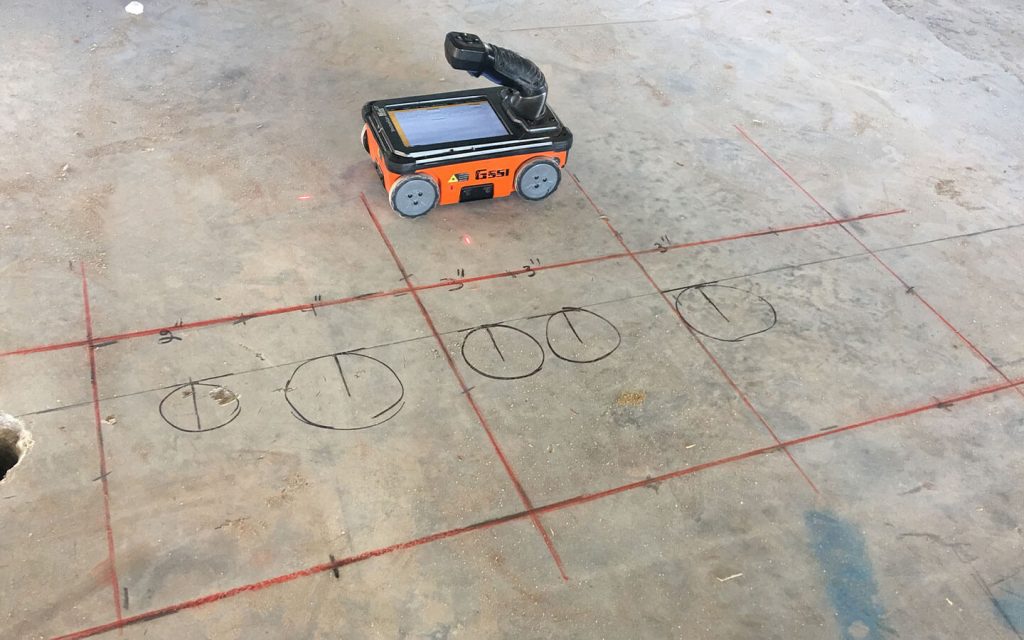Comprehensive Guide to Concrete Scanning Technologies
Comprehensive Guide to Concrete Scanning Technologies
Blog Article
Beyond the Surface Area: Leveraging Advanced Concrete Scanning Techniques for Unmatched Precision and Insight
Advanced concrete scanning techniques have arised as important devices in this search, providing a look underneath the surface to unveil a globe of critical insights. By using cutting-edge innovations, professionals can uncover anomalies, examine the problem of concrete frameworks, and make informed decisions that shape the training course of jobs.
Value of Advanced Concrete Scanning
The value of utilizing innovative concrete scanning strategies depends on the exceptional accuracy they supply for detecting sub-surface anomalies and making certain architectural honesty. By using cutting-edge innovations such as ground-penetrating radar (GPR), electromagnetic induction, and advanced finder imaging, building and construction specialists can dive under the surface area of concrete frameworks with a degree of precision that much goes beyond typical inspection approaches. Concrete Scanning. These strategies make it possible for the identification of hidden hazards like rebar corrosion, voids, conduits, or post-tension cables that could compromise the security and safety of a structure over time
Furthermore, progressed concrete scanning offers invaluable understandings right into the general condition of a concrete component without the demand for intrusive procedures, reducing the risk of causing damages during the assessment procedure. The capability to pinpoint the specific place and depth of possible problems allows for targeted repair work and maintenance, inevitably extending the life-span of the structure and maximizing its performance. Fundamentally, the value of advanced concrete scanning can not be overemphasized in the realm of construction and framework maintenance, where accuracy and reliability are extremely important.
Kinds Of Cutting-Edge Technologies

Anomalies and Issue Discovery

Along with GPR, concrete scanning techniques like thermography and impact-echo testing are also effective in finding my explanation abnormalities and flaws. Thermography uses infrared innovation to determine variants in surface area temperature, indicating potential areas of problem such as delamination or moisture access. On the various other hand, impact-echo screening includes examining acoustic actions to discover spaces, splits, and various other flaws within the concrete. By leveraging these sophisticated methods, professionals can proactively address architectural concerns, making sure the longevity and safety of concrete frameworks.
Assessing Concrete Problem
Exactly how can designers precisely evaluate the problem of concrete structures to guarantee their longevity and safety? Examining the concrete condition is an essential element of maintaining framework stability. Numerous sophisticated concrete scanning strategies are utilized for this purpose. Ground-penetrating radar (GPR) is commonly utilized to evaluate the internal framework of concrete, finding voids, splits, and other abnormalities that may endanger its strength. Furthermore, impact-echo screening can supply understandings into the density and honesty of concrete elements. Ultrasonic pulse speed screening is another useful method for assessing concrete top quality by measuring the rate of sound waves via the product.
Additionally, aesthetic examination continues to be a fundamental part of concrete condition evaluation. Engineers visually analyze the surface for indicators of deterioration, such as spalling, cracking, or discoloration. Combining non-destructive testing methods with aesthetic inspections permits a thorough assessment of concrete condition, enabling engineers to identify prospective issues at an early stage and execute prompt upkeep or repair services. By leveraging these advanced strategies, designers can make certain the lasting longevity and safety and security of concrete frameworks.
Enhancing Decision-Making Processes
In the world of facilities management, maximizing decision-making procedures is necessary for making sure the effective upkeep and long life of concrete frameworks. Improved Get the facts decision-making procedures in concrete administration entail using advanced scanning methods to gather in-depth data on the problem of structures. By leveraging modern technologies such as ground-penetrating radar and 3D imaging, stakeholders can make educated choices concerning replacement, reinforcement, or fixing techniques.
These progressed scanning techniques offer very useful insights right into the inner composition of concrete, determining potential issues such as spaces, splits, or corrosion that may not be noticeable on the surface. This level of in-depth details allows for proactive maintenance preparation, decreasing the risk of structural failings and raising the total lifespan of concrete structures.
Moreover, by incorporating digital paperwork and analysis tools into the decision-making process, stakeholders can track the evolution of concrete conditions over time, enabling predictive maintenance strategies and maximizing source appropriation. Inevitably, the assimilation of innovative check out this site concrete scanning methods improves decision-making processes by offering unequaled precision, insight, and efficiency in facilities monitoring.
Conclusion
In conclusion, advanced concrete scanning strategies supply unrivaled accuracy and understanding in finding anomalies, defects, and examining the problem of concrete structures. By leveraging cutting-edge modern technologies, decision-making procedures can be improved, leading to even more educated and efficient solutions for keeping and repairing concrete framework. These methods play an important role in making sure the safety and long life of concrete structures, making them an essential device in the field of construction and engineering.
Moreover, progressed concrete scanning provides vital insights right into the overall problem of a concrete element without the demand for invasive procedures, reducing the threat of triggering damage throughout the evaluation procedure - Concrete Scanning. Another ingenious technology is 3D X-ray scanning, which offers thorough images of the interior framework of concrete, offering useful details without the need for harmful screening. Additionally, Concrete Cover Meters are utilized to gauge the thickness of concrete cover over reinforcement bars precisely. Boosted decision-making processes in concrete administration include making use of advanced scanning methods to gather thorough data on the condition of structures.In final thought, progressed concrete scanning techniques offer unequaled precision and insight in discovering abnormalities, defects, and evaluating the condition of concrete frameworks
Report this page